
State University College
Dept. Of Human Ecology
Oneonta, NY, 13820
Fashion 224
History Of Costume
1910's
Instructor
Dr. Katherine G. Angell
Review Slides for 1910's Era
This website is best
viewed with a Netscape browser
and contains all the slides from which
the test slides will be
chosen. You may have to adjust your monitor's
resolution for
optimum viewing.
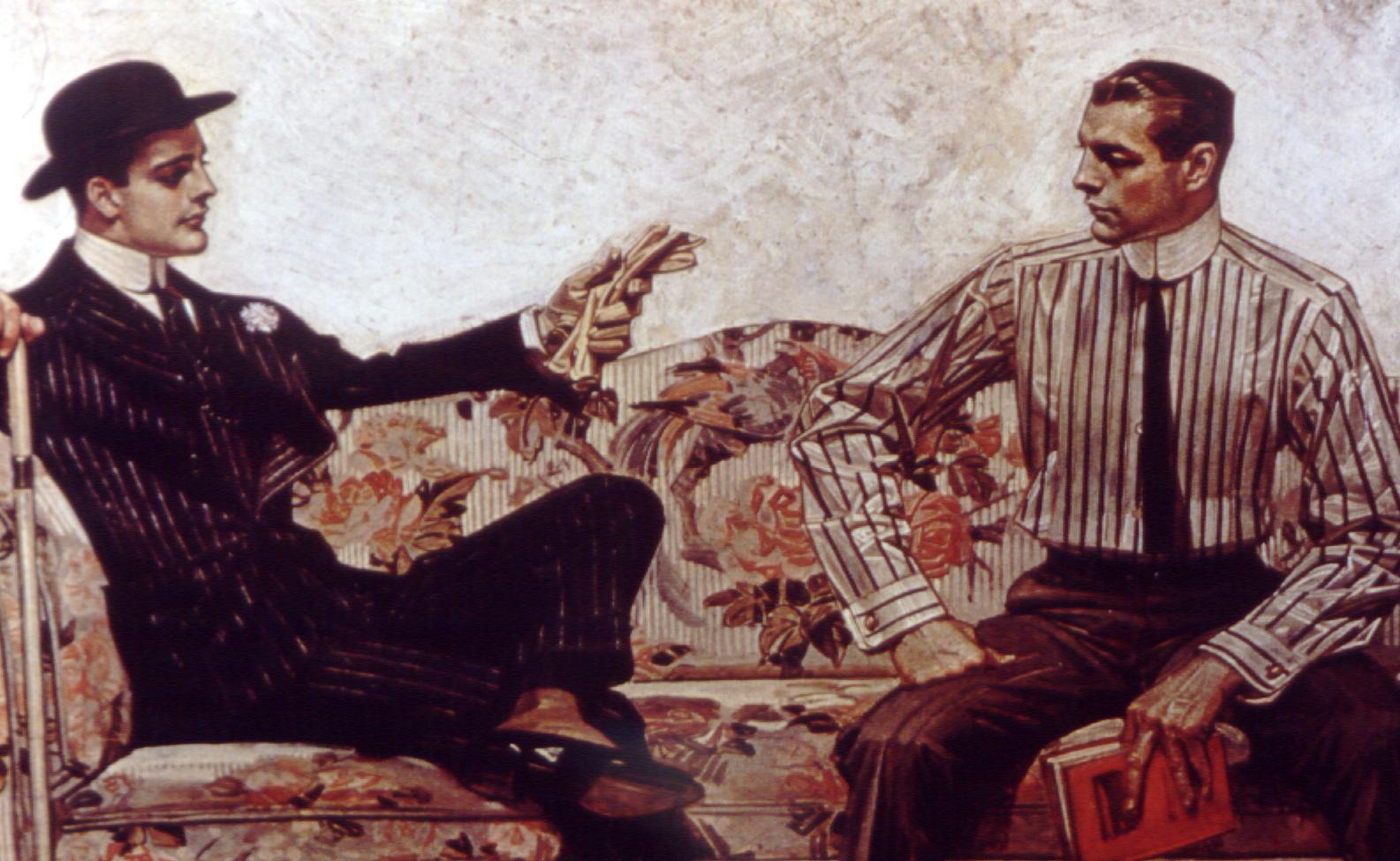
Slide No. 42 1910's
Men's shirts come in stripes. Detachable
collars still but the begining of a few
attached collars. Men in chalk white suit.
Derby hat, 4-in-hand tie.
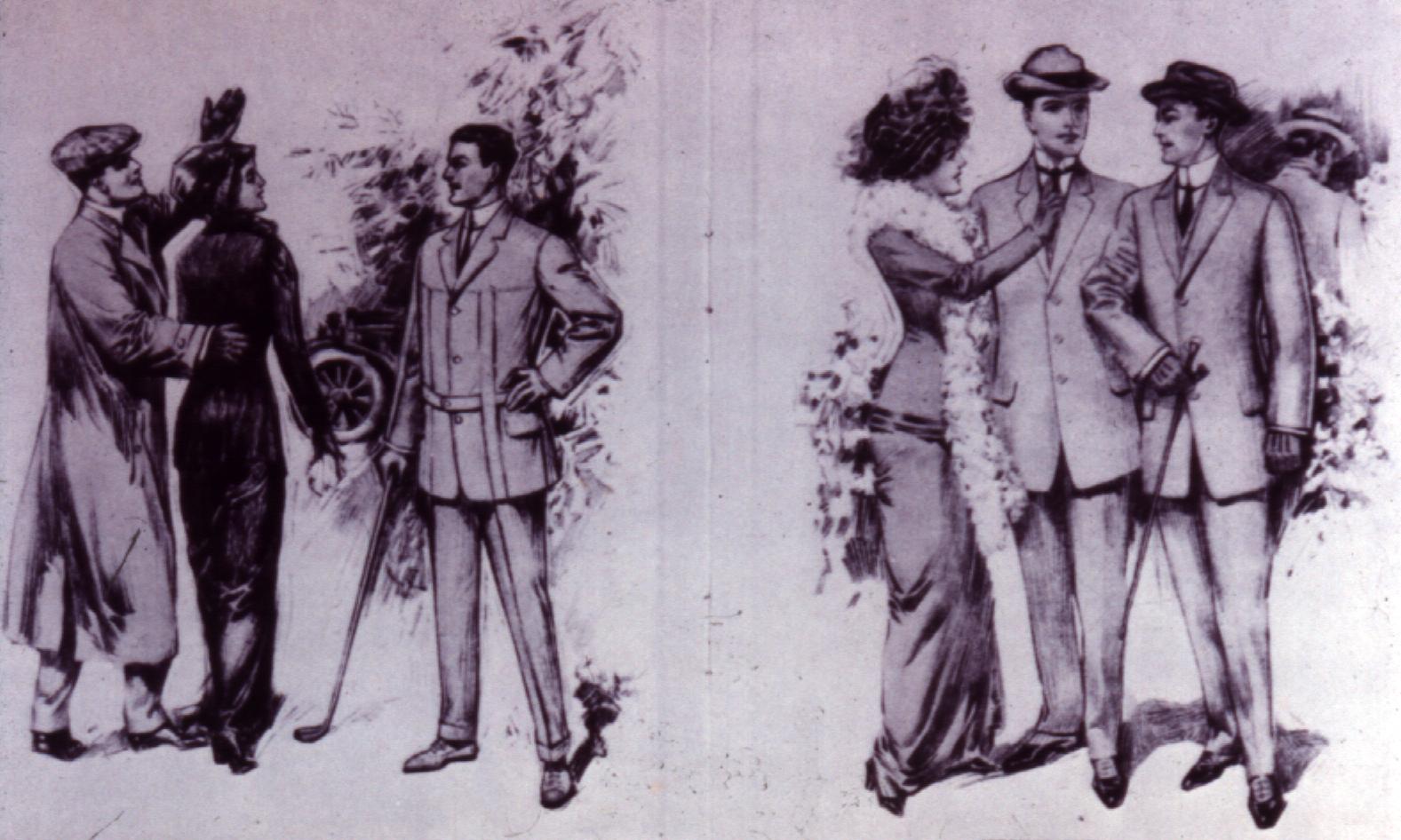
Slide No. 43 1910's
L to R. Duster and cap, hobble dress, Norfolk
jacket (belted sport coat)
assorted suits,
fedora hats.
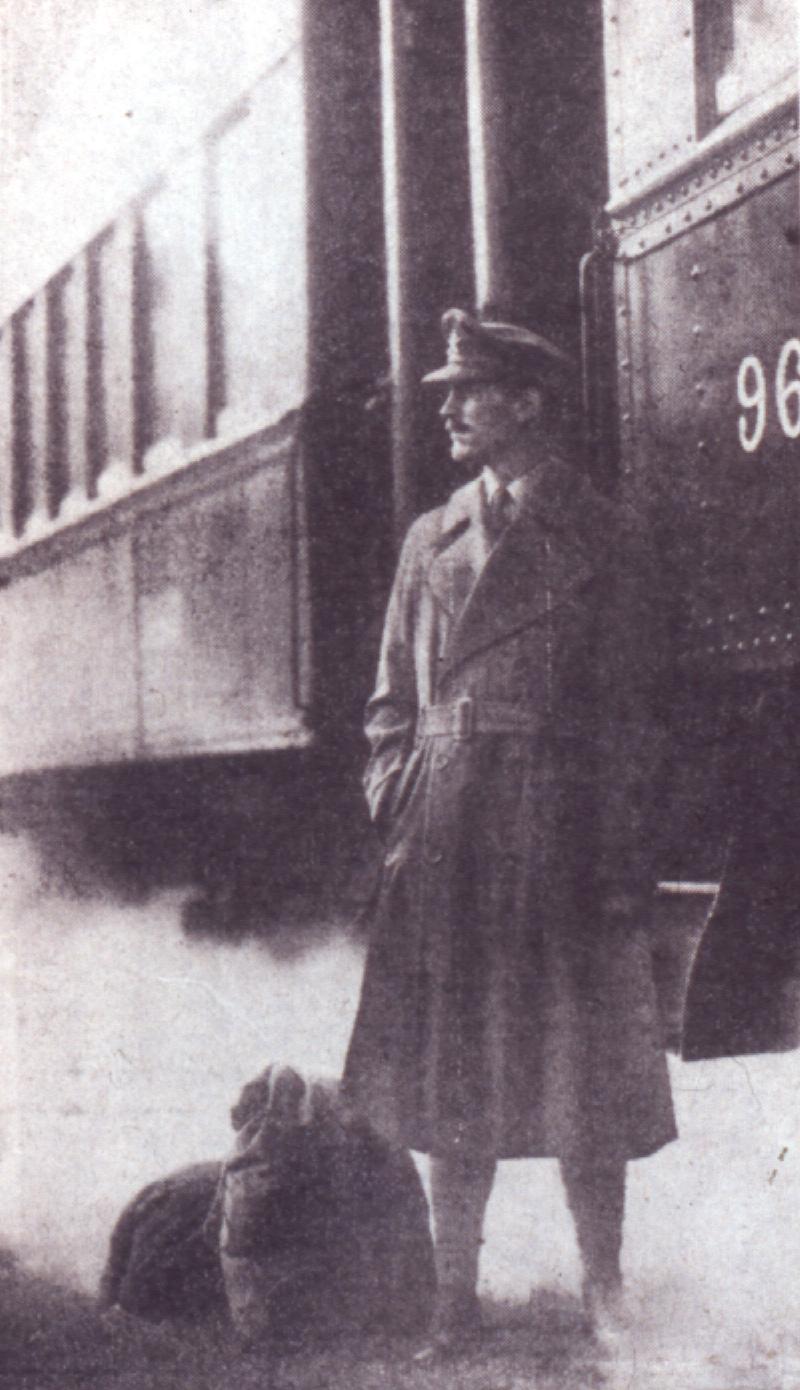
Slide No. 44 1910's
WWI 1914 - 1918. Men's clothing goes military.
"Trench Coat" the rain coat
of the military
gains popularity as mass fashion. Named for
trench warfare.
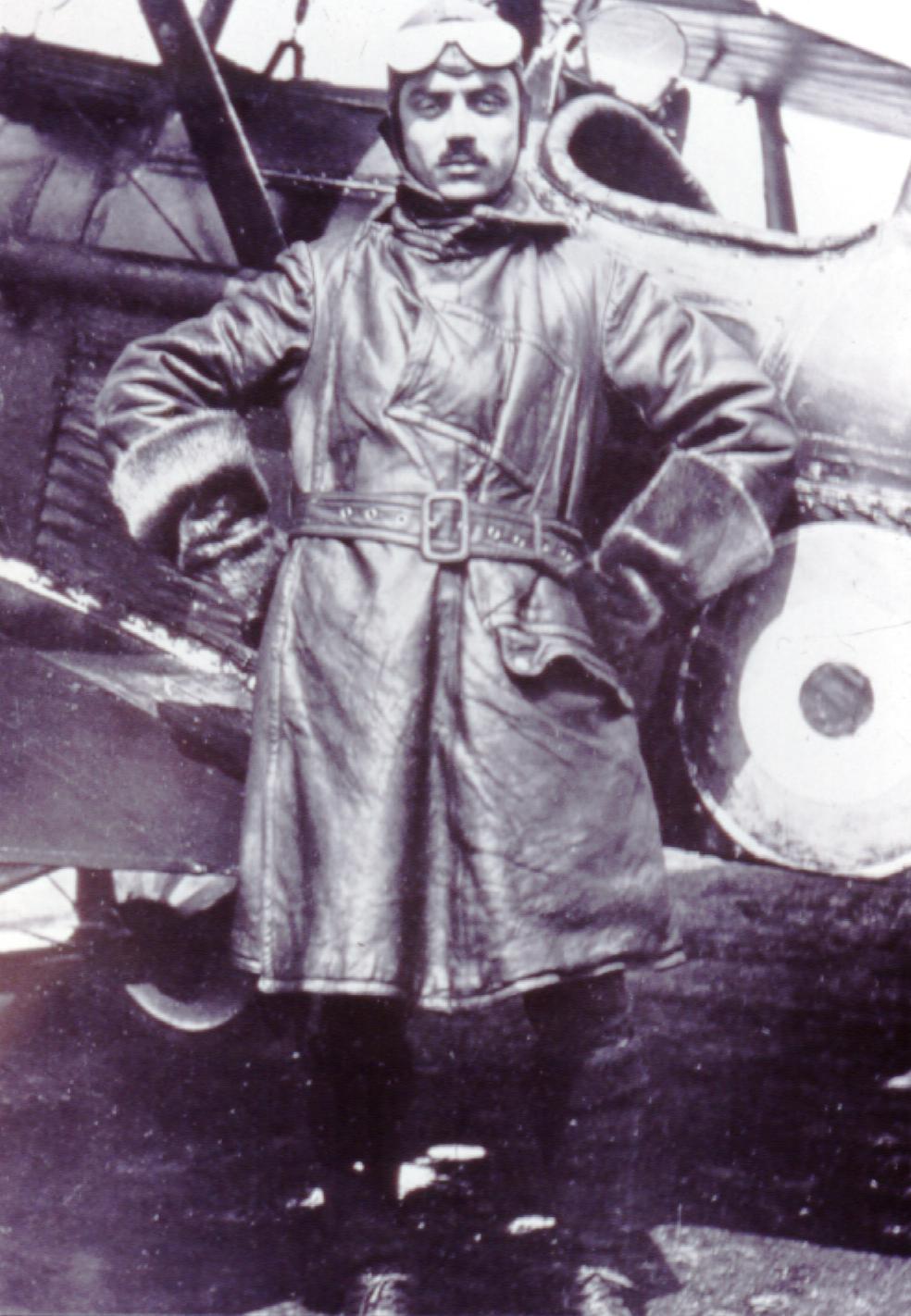
Slide No. 45 1910's
Use of leather coats comes from early pilots of WWI.

Slide No. 46 1910's
Suits, leaner, long, straight or hobbled skirt.
Often a lace jabot or a dickey at the neck.
Large hat is a Peter Pan hat.
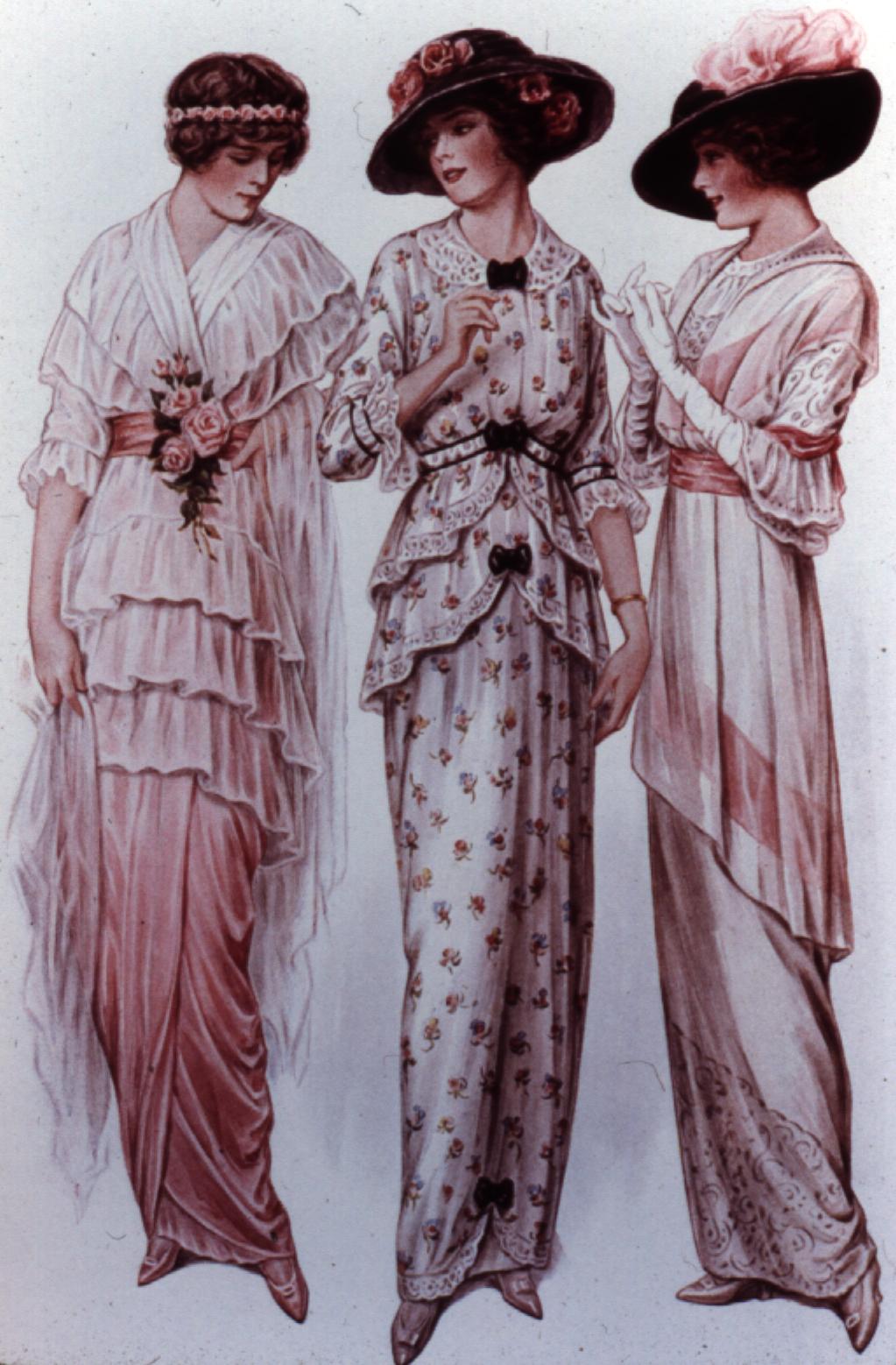
Slide No. 47 1910's
Day dresses - lamp shade or tunic styles. An
elongated top over a tight skirt. Large hat.
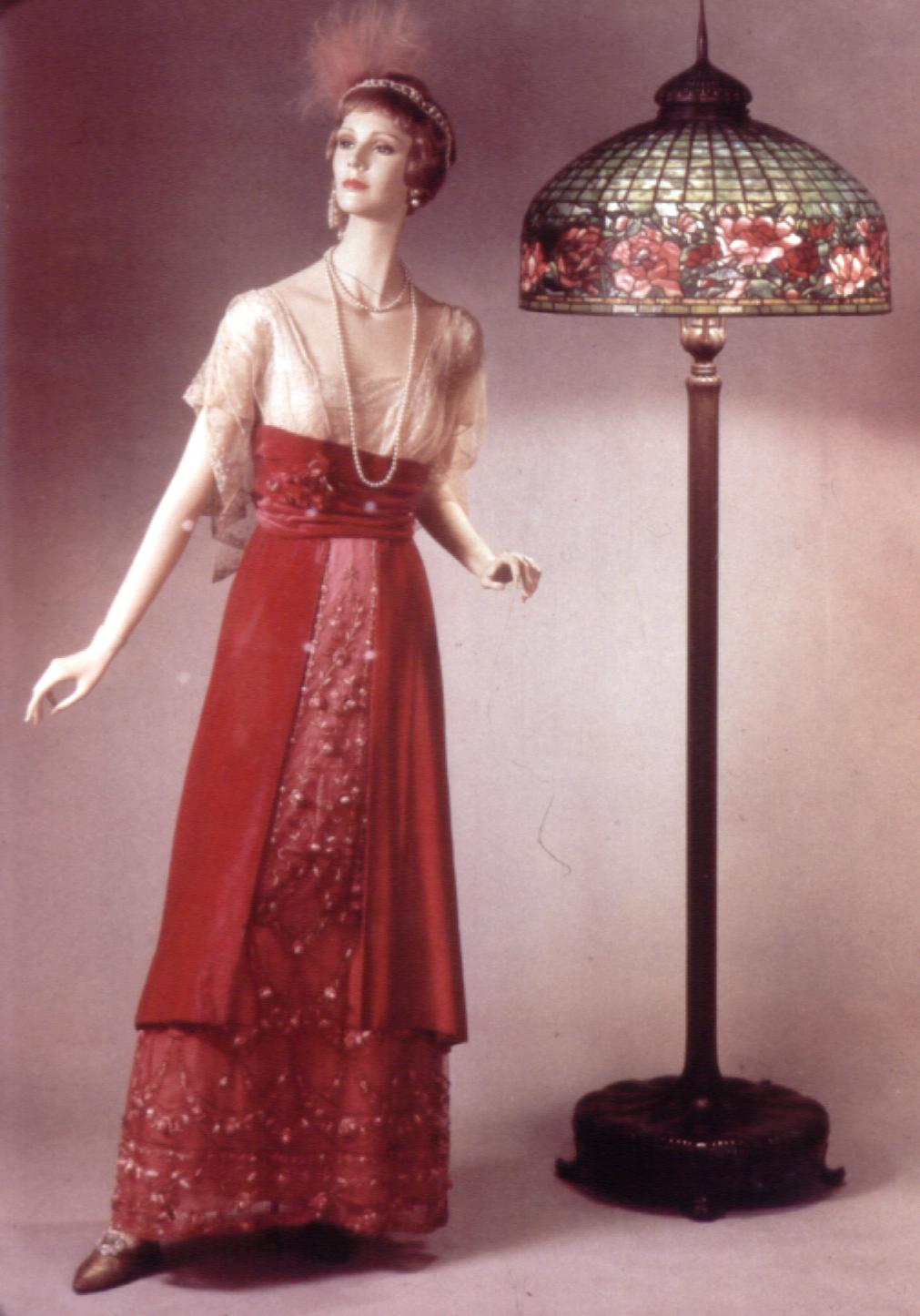
Slide No. 48 1910's
Lamp shade dress in the "uglies" mode. Many
types of fabric in one dress. This is the era
of the Tiffany stained glass and Stickley's
Mission furniture.
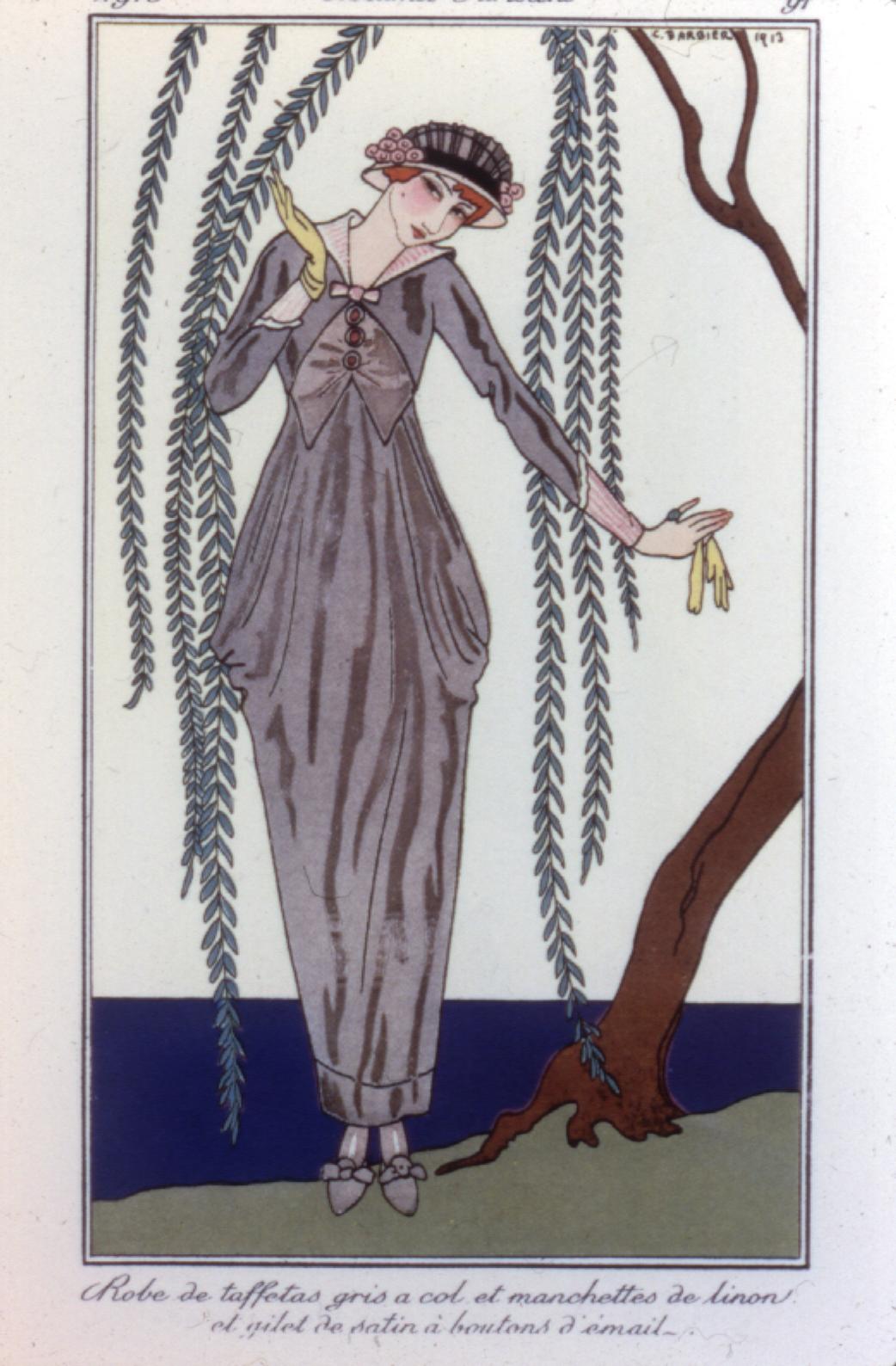
Slide No. 49 1910's
Hobble skirt with a Peg-top (Wide at hips
and narrow at ankles).
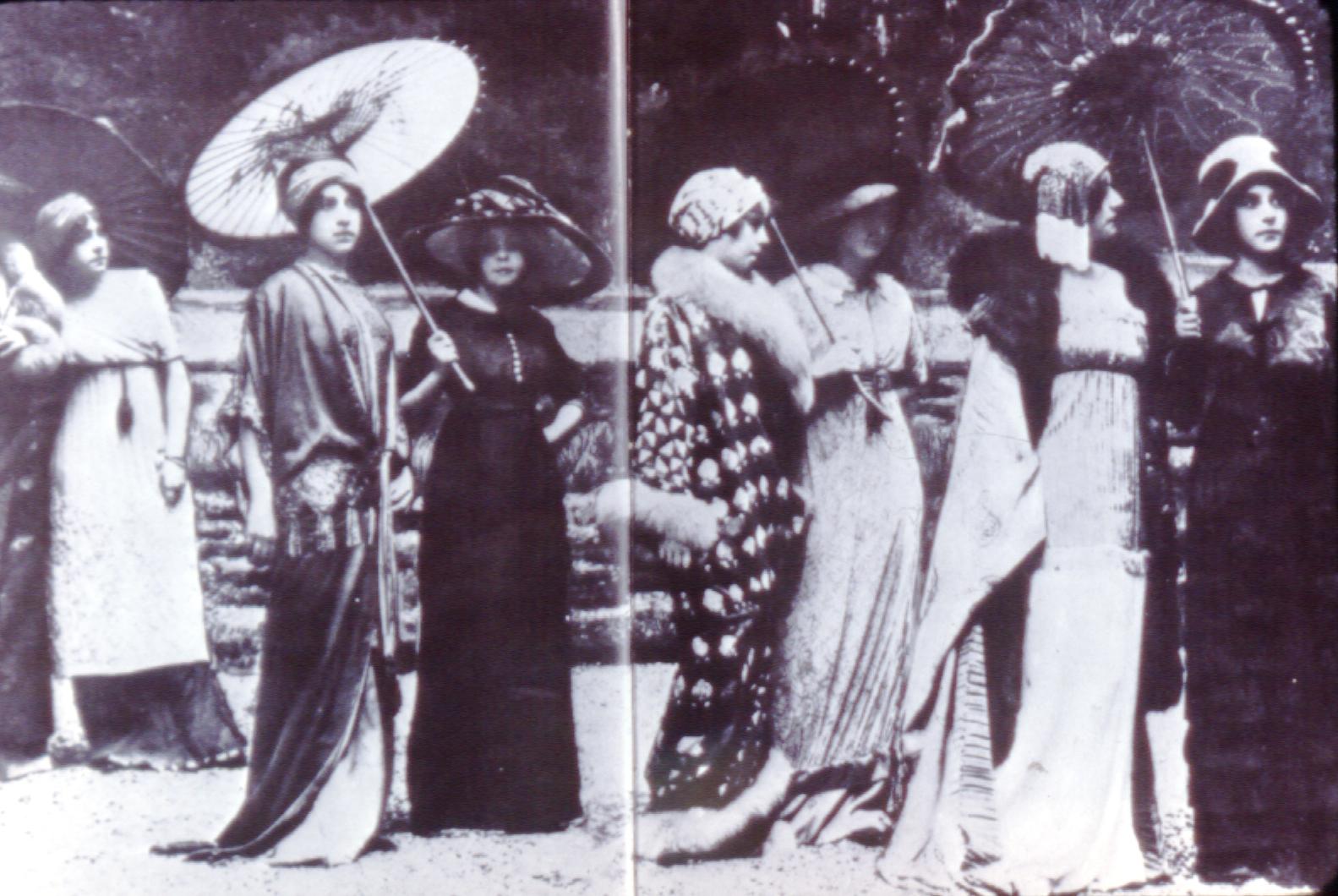
Slide No. 50 1910's
Oriental and Russian influence. Woman in
center of photo has a Dolman or Charmeuse
Coat.
Sleeves cut in one with the body of the coat.
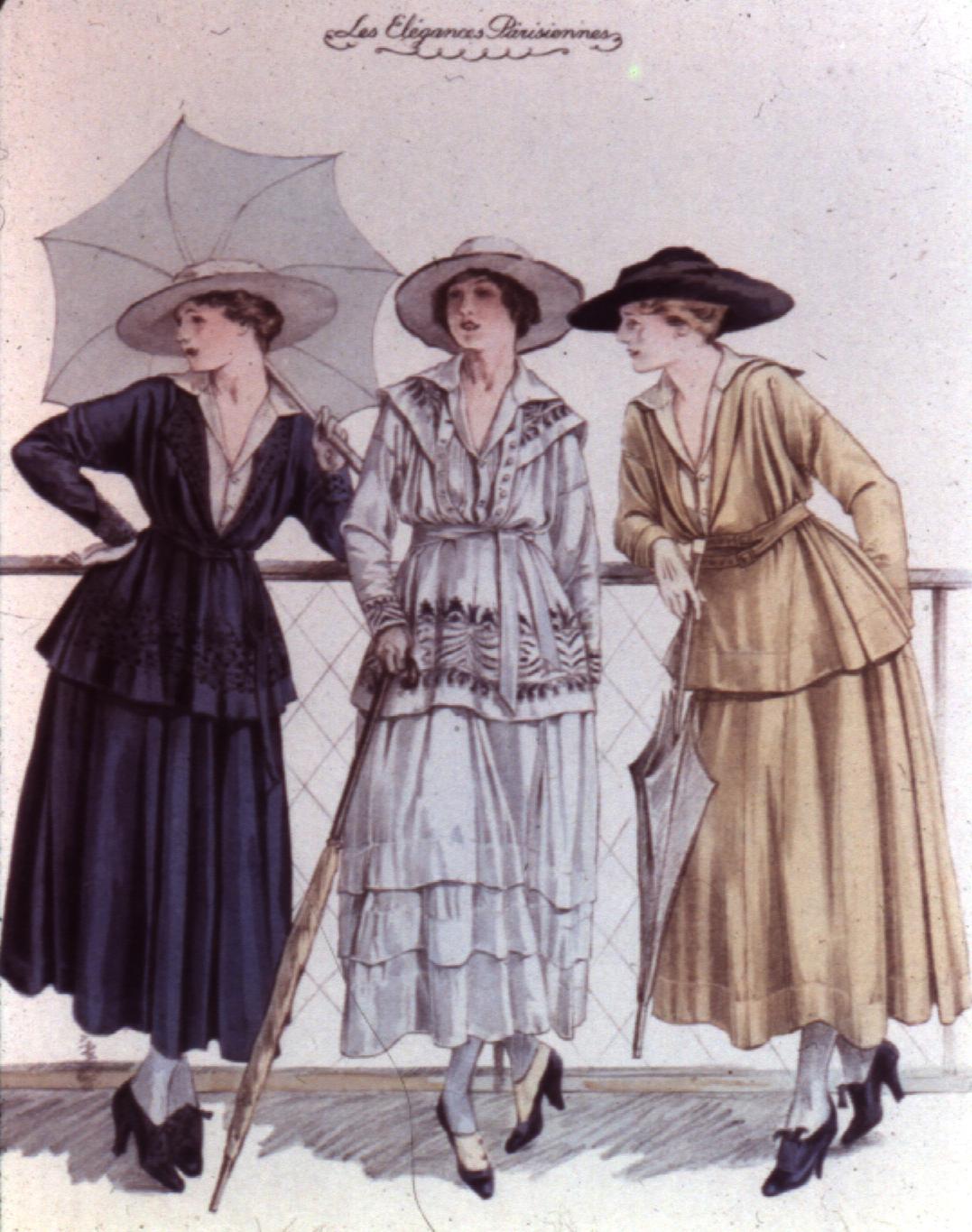
Slide No. 51 1910's
During and at the end of WWI. The barrel
silhouette or tonneau look comes in.
It
is a baggy dress/jacket combination that
made women look large
and droopy in the chest.
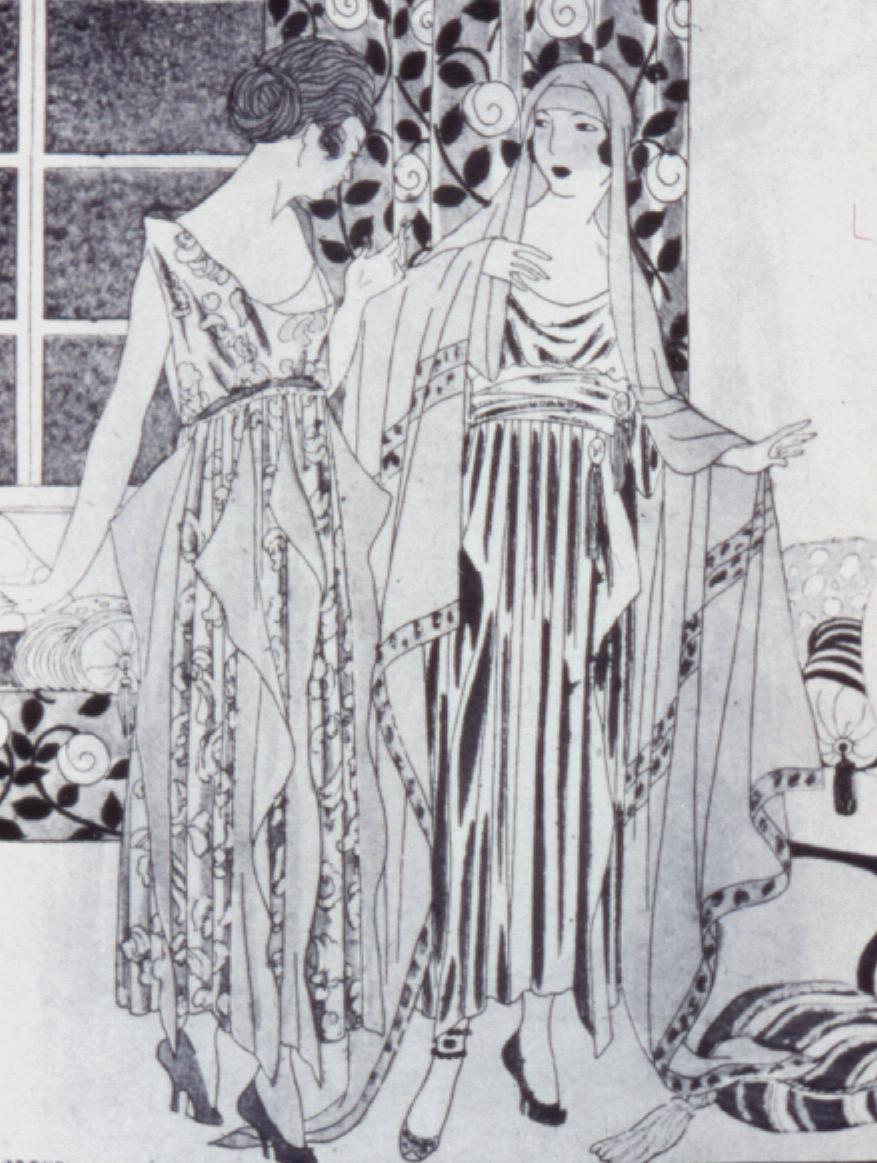
Slide No. 52 1910's
"Uglies", "Hankerchief frocks", a mixture of
odd fabrics and unusual hem lengths. Many dresses
of this period are disintegrating due to the fragile
materials, weight of trims, and the practice
of
adding salt to the silk to make it feel heavier.
Click on an Era.
Copyright© 1998, 1999
State University College at Oneonta
Visit us at:
http://www.oneonta.edu